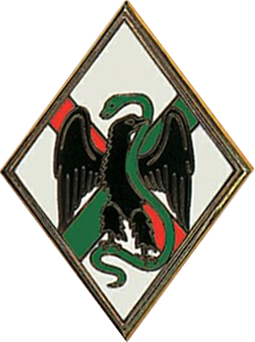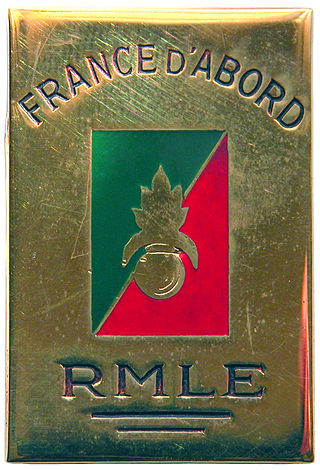
Joseph Bernelle (5 October 1785 Versailles, France Versailles, France 7 January 1871 Paris, France) was a French Army officer who commanded the French Foreign Legion during the Carlist War.

Joseph Bernelle (5 October 1785 Versailles, France Versailles, France 7 January 1871 Paris, France) was a French Army officer who commanded the French Foreign Legion during the Carlist War.
He was born in 1785 to General Pierre-Antoine and his wife, Lady Marguerite Desnoyers.[ citation needed ] He entered the École spéciale militaire de Saint-Cyr in 1801 and was commissioned as sous-lieutenant in 1803.[ citation needed ] He participated in the Italian Campaigns of the French Consulate and First French Empire from 1811.[ citation needed ] He was present at the Battle of Waterloo.[ citation needed ] He eventually obtained the rank of Chef de brigade or Colonel and Aide de Camp to General Curial.[ citation needed ]
In 1830 the French invaded Algeria and disbanded the seven regiments of Swiss and Germans in the French Army. [1] The Legion was formed on 10 March 1831. [2] The Legion was initially formed of the following battalions.
In Spring of 1835, the French Government handed the use of the Legion to the Spanish Government in order to fight Don Carlos. Colonel Bernelle was given command and the local rank of General. He landed his troops on 17 August 1835 at Tarragona, where he had command of 123 officers and 4,000 men. He soon disbanded the nationally organized battalions and embraced the policy of amalgamation, with French as a common tongue. [3] It 1836, Bernelle organized an artillery battery and three squadrons of Polish Lancers. [1] On 24 May 1836, Bernelle and his men, " attacked Carlists threatening the garrison at Zubiri, northeast of Pamplona near Larrasoaña. Fighting in heavy snow the Carlists were driven off with over 100 casualties, and 30 prisoners executed as a reprisal...." [3] On 26 April, they defeated another Carlist force at the Battle of Terapegui, and again at 2nd Zubiri. Despite his successes, Bernelle was withdrawn 'due to complains about the neglect of his men. [1] He was relieved by Colonel Joseph Conrad who was killed in action by the Carlists on 2 June 1837 at the Battle of Barbastro.[ citation needed ]

The French Foreign Legion is an elite corps of the French Army that consists of several specialties: infantry, cavalry, engineers, airborne troops. It was created in 1831 to allow foreign nationals into the French Army. It formed part of the Armée d’Afrique, the French Army's units associated with France's colonial project in Northern Africa, until the end of the Algerian War in 1962.

Tomás de Zumalacárregui e Imaz, known among his troops as "Uncle Tomás", was a Spanish Basque officer who lead the Carlist faction as Captain general of the Army during the First Carlist War. He was occasionally nicknamed the "Wolf of the Amezcoas", making reference to his famous military victory in the region of Navarre.

The Zouaves were a class of light infantry regiments of the French Army serving between 1830 and 1962 and linked to French North Africa; as well as some units of other countries modelled upon them. The zouaves were among the most decorated units of the French Army.

Marshal General Jean-de-Dieu Soult, 1st Duke of Dalmatia was a French general and statesman. He was a Marshal of the Empire during the Napoleonic Wars, and served three times as President of the Council of Ministers of France.

The First Carlist War was a civil war in Spain from 1833 to 1840, the first of three Carlist Wars. It was fought between two factions over the succession to the throne and the nature of the Spanish monarchy: the conservative and devolutionist supporters of the late king's brother, Carlos de Borbón, became known as Carlists (carlistas), while the progressive and centralist supporters of the regent, Maria Christina, acting for Isabella II of Spain, were called Liberals (liberales), cristinos or isabelinos. Aside from being a war of succession about the question who the rightful successor to king Ferdinand VII of Spain was, the Carlists’ goal was the return to a traditional monarchy, while the Liberals sought to defend the constitutional monarchy.

For centuries, Spain recruited foreign soldiers to its army, forming the foreign regiments such as the Regiment of Hibernia. However, the specific unit of the Spanish Army and Spain's Rapid Reaction Force, now known as the Spanish Legion, and informally known as the Tercio or the Tercios, is a 20th-century creation. It was raised in the 1920s to serve as part of Spain's Army of Africa. The unit, which was established in January 1920 as the Spanish equivalent of the French Foreign Legion, was initially known as the Tercio de Extranjeros, the name under which it began fighting in the Rif War of 1921–1926.

General Sir George de Lacy Evans was Irish officer in the British Army who served in four of the United Kingdom's 19th century wars. He became a long-serving Member of Parliament.
Brigadier-General Sir Charles Shaw was a Scottish soldier and liberal, who served in the British Army and in British volunteer forces on the constitutional side in civil wars in Portugal and Spain. He was later a pioneering police commissioner.

The 1st Foreign Regiment is a depot regiment of the Foreign Legion in the French Army. It is located at Aubagne.

The Foreign Legion has had a long and unique history amongst the units of the French Army. It was historically formed of expatriate enlisted personnel led by French officers. Founded by a royal ordinance issued by King Louis Philippe of France on March 9, 1831, with the aim of bolstering the strength of the French Army while also finding a use for the influx of refugees inundating France at the time. The Foreign Legion subsequently found a permanent home in the ranks of the French military. The Foreign Legion's history spans across the Conquest of Algeria, the Franco-Prussian War, numerous colonial exploits, both World Wars, the First Indochina War, and the Algerian War.

The British Auxiliary Legion, also called the British Legion or Westminster Legion, existed from 1835 to 1837. It was a British military force sent to Spain to support the Liberals and Queen Isabella II of Spain against the Carlists in the First Carlist War.

Chapelgorris, also called Peseteros, were a type of volunteer unit during the First Carlist War, raised at the beginning of the war in the province of Guipúzcoa. They fought against the Carlists.

The Tonkin Expeditionary Corps was a French military command based in northern Vietnam (Tonkin) from June 1883 to April 1886. The expeditionary corps fought the Tonkin Campaign (1883–86) taking part in campaigns against the Black Flag Army and the Chinese Yunnan and Guangxi Armies during the Sino-French War and the period of undeclared hostilities that preceded it, and in important operations against Vietnamese guerrilla bands during the subsequent 'Pacification of Tonkin'.

The Irish Legion was a light infantry regiment in service of the French Imperial Army established in 1803 for an anticipated invasion of Ireland. It was later expanded to a four battalions and a depot, the legion won distinction in the Walcheren Expedition, the Peninsular War, and the German Campaign of 1813. Following the disbandment of the foreign regiments in 1815, the regiment's personnel were distributed.

The Hohenlohe Regiment was an infantry regiment of the French Army established after the abdication of Napoleon I. It consisted of foreign soldiers who wished to continue in French service under the restored monarchy. The regiment was raised, named after and commanded by Louis Aloysius, Prince of Hohenlohe-Waldenburg-Bartenstein, a German prince and Marshal of France.

The 6th Foreign Infantry Regiment was an infantry regiment of the Foreign Legion in the French Army from 1939 to 1941 and again from 1949 to 1955.

The Marching Regimentof the Foreign Legion (RMLE) was a French military unit that fought in World War I and World War II. Initially composed of marching regiments from the 1st Foreign Regiment of Sidi Bel Abbes and the 2nd Foreign Infantry Regiment of Saida, Algeria, it re-formed as the 3rd Foreign Infantry Regiment.

The 2nd Foreign Legion was created by the King. On 29 June 1835 Louis Philippe I, the King of France ceded the Foreign Legion to Queen Isabella II of Spain.
The Foreign Legion was established in 1831 by King Louis Philippe I to consolidate all foreign corps fighting under French colors, which included, among others, the Swiss Guards, the Swiss regiment of the Royal Guard, and the Hohenlohe Regiment. After its creation, the Legion participated in the further recruitment of foreign nationals into French military service.

Pierre Jean Joseph Jeanningros was a French général, famous for having commanded the French Foreign Legion.